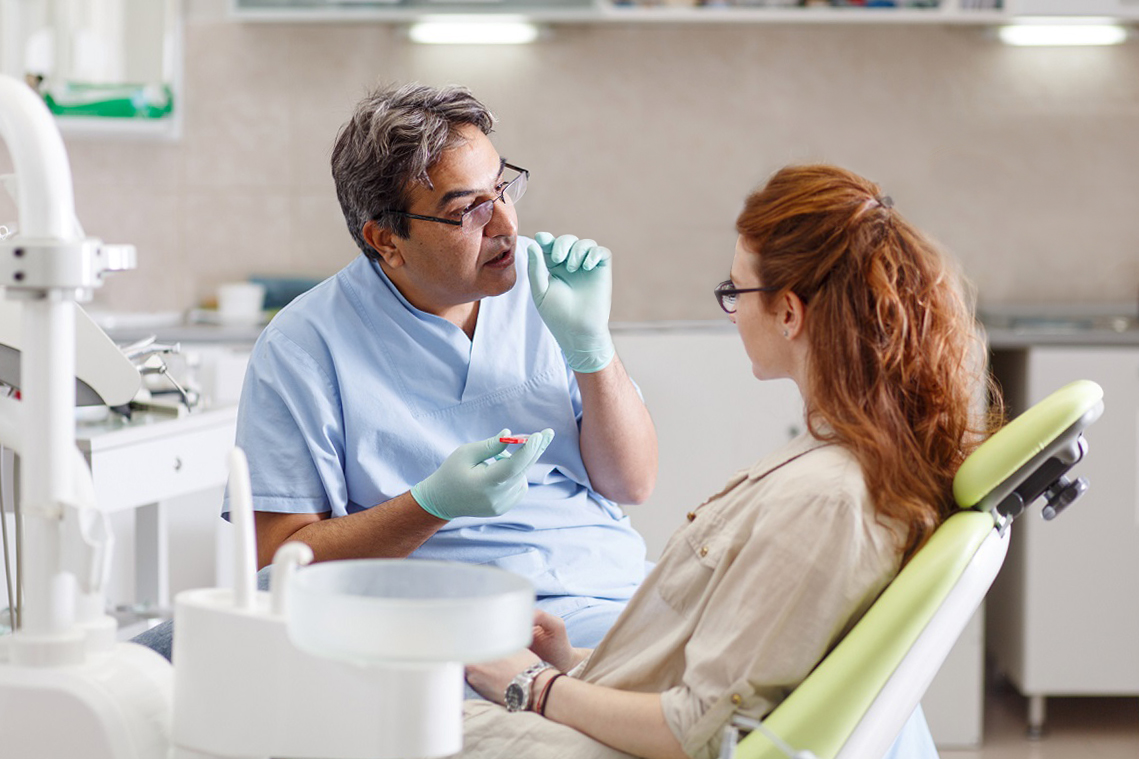Legacy Orthodontics Fundamentals Explained
An orthodontist is a dental expert educated to identify, prevent, and treat teeth and jaw irregularities. They correct existing problems and are trained to identify issues that may develop in the future. Orthodontists deal with people of all ages, from kids to adults. People typically associate a best smile with good wellness.
Malocclusion, or misaligned teeth, can result in dental concerns, consisting of dental cavity, gum illness, and challenging or agonizing eating. But not every person is birthed with straight teeth. If you have a negative bite or large rooms in between your teeth, you may intend to seek advice from a dental expert specializing in orthodontic care.
Legacy Orthodontics Things To Know Before You Buy
( Image Credit History: DigitalVision/Getty Images) Orthodontists make use of dealt with and removable dental gadgets, like dental braces, retainers, and bands, to transform the setting of teeth in your mouth. Orthodontic treatment is for oral problems, consisting of: Jagged teethBite problems, like an overbite or an underbiteCrowded teeth or teeth that are too far apartJaw misalignmentThe objective of orthodontic therapy is to enhance your bite.
A healthy bite ensures you can consume, chew, and talk properly. While you might consider orthodontists as primarily for kids or young adults that require dental braces, they can deal with oral troubles at any kind of age. Orthodontists participate in university, oral college, and orthodontic college. After college graduation, they invest 2 or 3 years in an orthodontic residency program.
, however not all dental professionals are orthodontists. They focus on 2 areas: How to properly and securely move teeth How to effectively lead advancement in the teeth, jaw, and faceOnce an orthodontist has completed training, they have the option to end up being board certified.
The Buzz on Legacy Orthodontics
Imbalance, or malocclusion, is the most usual reason individuals see an orthodontist. It is hereditary and is the outcome of dimension differences in between the upper and reduced jaw or between the jaw and teeth. Malocclusion causes tooth congestion, a twisted jaw, or irregular bite patterns. Malocclusion is normally treated with: Your orthodontist affixes metal, ceramic, or plastic square bonds to your teeth.
Some people require a headwear to help move teeth right into line with stress from outside the mouth. A retainer is a custom-made device that maintains your teeth in place.
They're usually utilized on children. They can create added room in the mouth without having to pull teeth. If you have a major underbite or overbite, you might need orthognathic surgical procedure (also called orthodontic surgical procedure) to extend or shorten your jaw. Orthodontists use cables, medical screws, or plates to support your jaw bone.
You may require to see an orthodontist if you have: Crowding or otherwise enough area for all of read your teethOverbite, when your upper teeth come by your bottom teethUnderbite, when your base teeth are too far forwardSpacing or issues with gapsCrossbite, which is when your upper teeth fit behind your base teeth when your mouth is closedOpen bite or an upright void between your front bottom and top teethMisplaced midline, when the center of your bottom and top teeth don't align Remedying a dental malocclusion can: Make attacking, eating, and talking easierImprove the balance of our face and your general appearanceEase pain from temporomandibular joint conditionsSeparate your teeth and make them simpler to cleanse, assisting protect against dental caries or cavities It's usually a dental professional that initially notifications misaligned teeth throughout a regular examination.
10 Simple Techniques For Legacy Orthodontics

Throughout your first orthodontic examination, you'll likely have: An oral examPhotos taken of your face and smileDental X-raysPanoramic (360 degree) X-rays of your face and headImpressions to create mold and mildews of your teethThese examinations will help your orthodontist understand exactly how to wage your therapy. clear braces. An orthodontist is a dentist that's had training to treat your teeth and jaw
Orthodontists may perform surgical treatment, exams,X-rays,and even more to help you obtain a much more comfy, healthier smile. An orthodontist is concentrated on your bite, so something like a damaged tooth would certainly be handled by a dentist. Orthodontists are dental professionals but not all dentists are orthodontists. Orthodontists are concentrated on your bite, or the way your teeth fit with each other, and the straightness of your teeth.
Ever questioned how celebrities always appear to have perfectly aligned teeth? The response typically lies in the competent hands of an orthodontist. What exactly does an orthodontist do? Orthodontists are oral professionals that concentrate on remedying irregularities in the teeth and jaws. Their know-how surpasses just developing an attractive smile; it includes enhancing your overall dental wellness and feature.
Rumored Buzz on Legacy Orthodontics

While braces are one of the most commonly recognized orthodontic therapy, orthodontists have a diverse toolkit at their disposal. The particular technique chosen depends upon the seriousness of the case, the patient's age, and private choices. These tried-and-true dental braces make use of a system of braces bound to the teeth and connected by cables.
Clear aligners, like Invisalign, are a prominent choice for patients looking for an extra discreet treatment option. These detachable trays are customized to gradually move the teeth's setting. Headgear might be used combined with braces or aligners to apply additional targeted forces, particularly for remedying jaw inconsistencies. In instances of narrow jaws, palatal expanders can be used to develop room for correct tooth placement.
Comments on “5 Simple Techniques For Legacy Orthodontics”